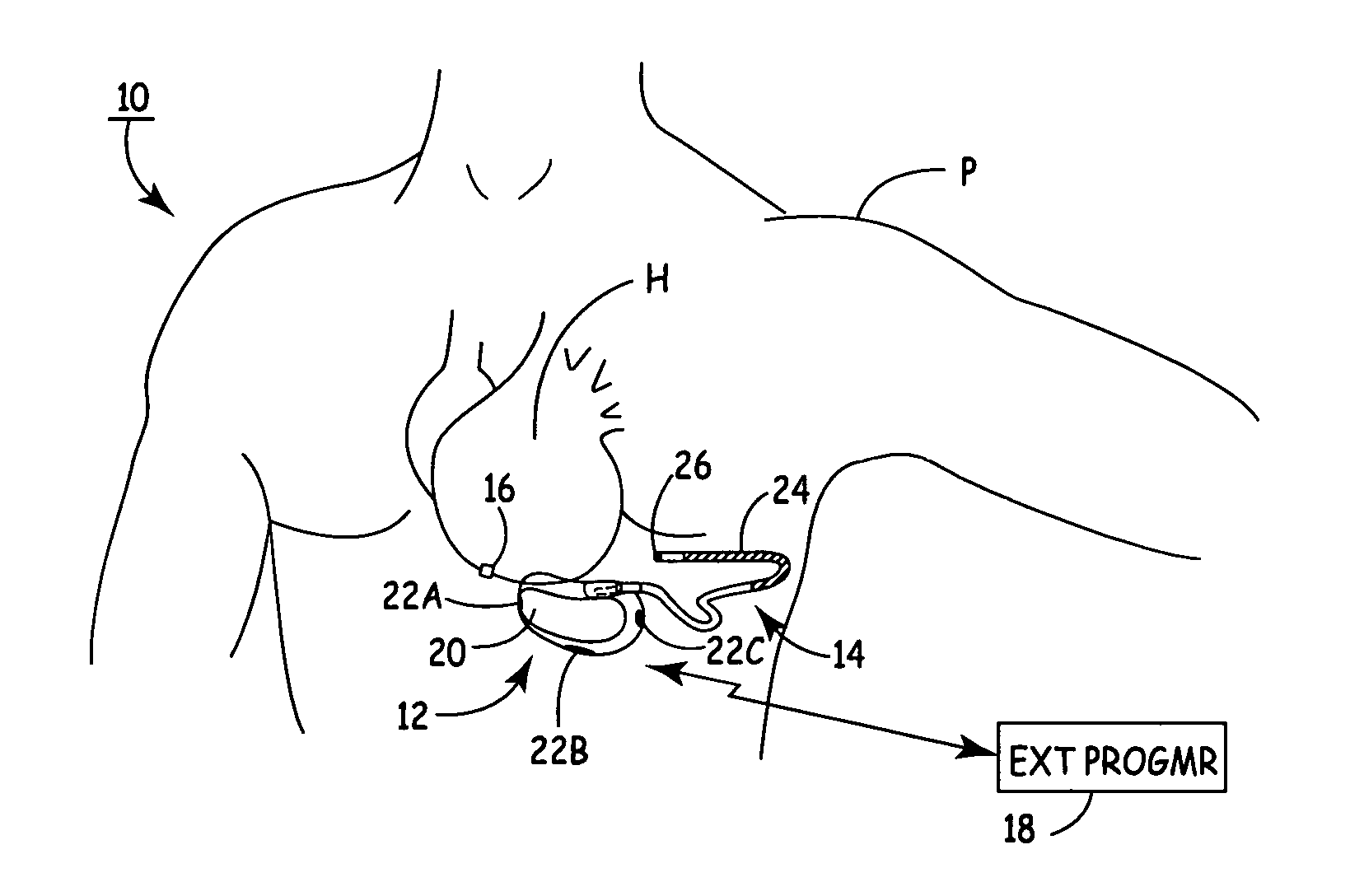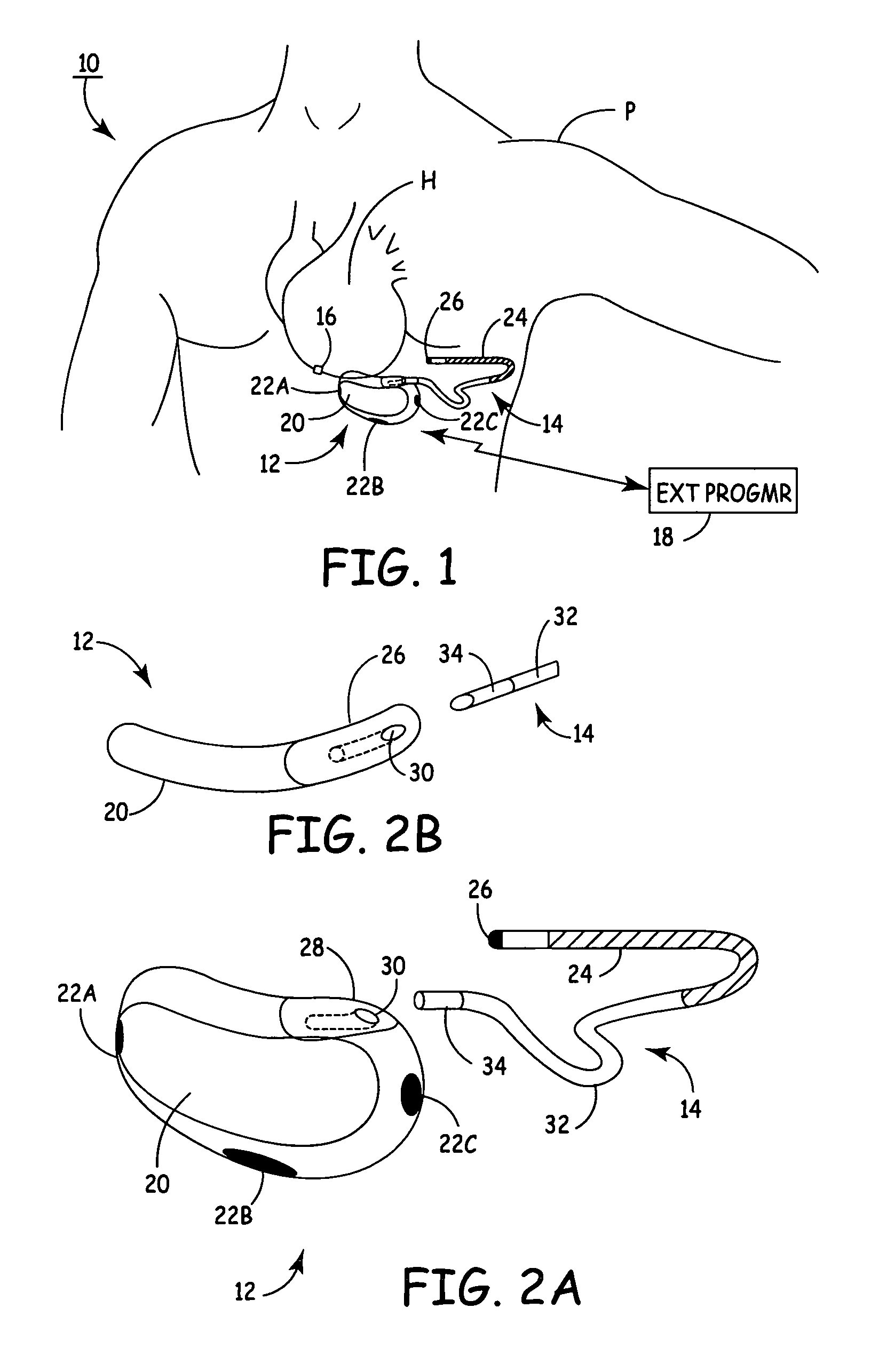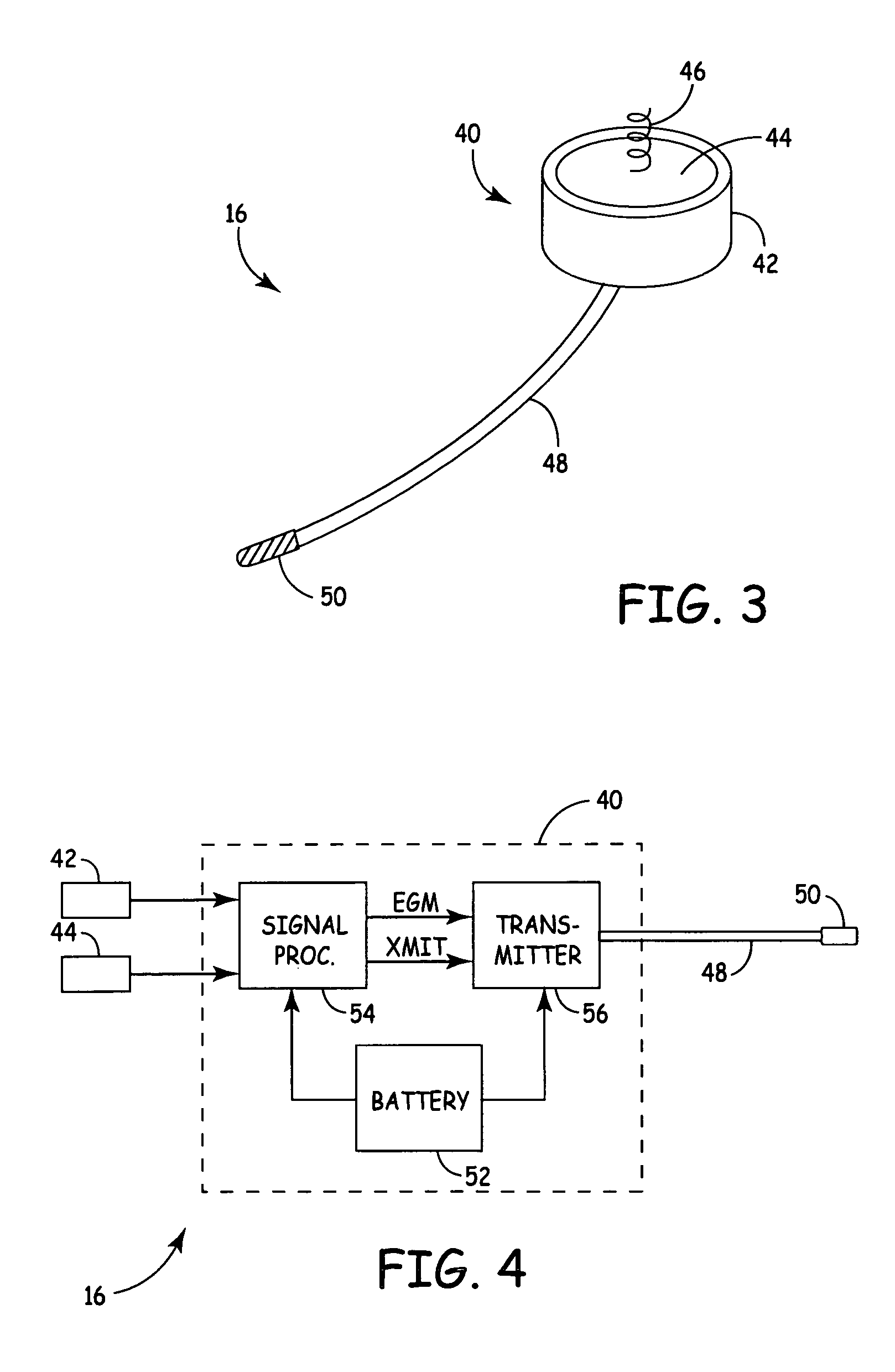Subcutaneous ICD with separate cardiac rhythm sensor
a subcutaneous icd and cardiac rhythm technology, applied in the field of implantable medical devices, can solve the problems of limited atrial activation sensing, more challenging rhythm and arrhythmia sensing with the subq icd,
- Summary
- Abstract
- Description
- Claims
- Application Information
AI Technical Summary
Problems solved by technology
Method used
Image
Examples
Embodiment Construction
[0012]FIG. 1 shows implantable cardioverter defibrillator (ICD) system 10, which includes SubQ ICD 12, subcutaneous sensing and cardioversion / defibrillation therapy delivery lead 14, cardiac rhythm sensor 16, and external programmer 18.
[0013]Housing or canister 20 of SubQ ICD 12 is subcutaneously implanted outside the ribcage of patient P, anterior to the cardiac notch, and carries three subcutaneous electrodes 22A-22C. Lead 14 extends from housing 20 and is tunneled subcutaneously laterally and posterially to the patient's back at a location adjacent to a portion of a latissimus dorsi mucle. Electrode coil 24 and sensing electrode 26 are located at the distal end of lead 14. Heart H is disposed between the SubQ ICD housing 20 and distal electrode coil 24 of lead 14.
[0014]SubQ ICD 12 contains signal processing and therapy delivery circuitry to detect bradycardia and tachycardia conditions and to apply appropriate pacing and defibrillation shocking pulses to heart H. The pacing pulse...
PUM
 Login to View More
Login to View More Abstract
Description
Claims
Application Information
 Login to View More
Login to View More - R&D
- Intellectual Property
- Life Sciences
- Materials
- Tech Scout
- Unparalleled Data Quality
- Higher Quality Content
- 60% Fewer Hallucinations
Browse by: Latest US Patents, China's latest patents, Technical Efficacy Thesaurus, Application Domain, Technology Topic, Popular Technical Reports.
© 2025 PatSnap. All rights reserved.Legal|Privacy policy|Modern Slavery Act Transparency Statement|Sitemap|About US| Contact US: help@patsnap.com



